1. Font editing and design tools
1.1. FontLab,Ltd
1.2. Creating attractive texts
2. Hypertext and hypermedia
2.1. Hypertext -Hypertext is a text which contains links to other texts. -The term was invented by Ted Nelson around 1965. -Hypertext is the subset of hypermedia.
2.2. Hypermedia -Hypermedia is not constrained to be text-based. -It can include other media ,eg graphic, image, and especially the continuous media - sound and video.
2.3. Hypermedia structures
2.3.1. Links
2.3.1.1. Links are connections between conceptual elements.
2.3.2. Nodes
2.3.2.1. Nodes are accessible topics, documents, messages, and content elements.
2.3.3. Anchors
2.3.3.1. Reference from one document to another document, image, sound, or file on the Web.
3. Fontographer -is a specialized graphic editor -compatible with both Macintosh -can be used to develop PostScript,TrueType and OpenType fonts
4. Text elements in a Multimedia Presentation
4.1. Interactive buttons
4.1.1. -A button is a clickable object that executes a command when activated -users can create their own buttons from bitmap and graphic
4.2. Menus for navigation
4.2.1. -A user navigate through content using a menu -consist of a text of topics
4.3. Field for reading
4.3.1. -Reading a hard copy is easier and faster than reading from the computer screen -can be printed as portrait or landscape
4.4. HTML documents
4.4.1. -HTML document are marked using tags. -HTML stands for Hypertext Markup Language.
4.5. Symbols
4.5.1. -are concentrated text in the form of stand-alone graphic constructs -convey meaningful messages
4.6. Icons
4.6.1. -are symbolic representation of objects and processes -similar to the actual product
5. Importance of text in a multimedia presentation
5.1. simplest of data types and requires the least amount of storage.
5.2. form of symbols, words, sentences, and paragraphs.
5.3. a vital element of multimedia menus, navigation system, and content.
6. Understanding fonts and typefaces
6.1. A typeface is a family of graphic characters, often with many type sizes and styles.
6.1.1. Example: Bookman Old Style
6.2. A font is a collection of characters of single size and styles belonging to a particular typeface family.
6.2.1. Example: Arial 18 point Bold
6.3. The study of fonts and typefaces includes the following
6.3.1. Font styles
6.3.1.1. Boldface
6.3.1.2. Italic
6.3.1.3. Underlining
6.3.1.4. Outlining
6.3.2. Font terminology
6.3.2.1. Baseline
6.3.2.1.1. the line on which the bases of characters are arranged
6.3.2.2. Cap height
6.3.2.2.1. cap height refers to the height of a capital letter
6.3.2.3. x-height
6.3.2.3.1. the distance between the baseline and the top of a lower-case letter x
6.3.2.4. Ascenders/descenders
6.3.2.4.1. strokes that rise above the x-height/drop below the baseline
6.3.2.5. Kerning
6.3.2.5.1. adjustment of space between certain pairs of letters (e.g. AV) to make them look more uniform
6.3.2.6. Tracking
6.3.2.6.1. adjustment of space for groups of letters
6.3.3. Cases
6.3.3.1. A capitalized letter is referred to as uppercase, while a small letter is referred to as lowercase.
6.3.4. Serif versus sans serif
6.3.4.1. A serif is the little decoration at the end of a letter stroke
6.3.4.2. Sans serif fonts do not have decoration at the end of a letter stroke
7. Computer and Text
7.1. Bitmap font and vector font
7.1.1. Bitmaps font consist of a matrix of dots or pixels representing the image. -File size increases as more sizes are added. -Require a lot of memory. -Non-scalable.
7.1.2. Vector fonts drawing use instructions and mathematical formulae to describe each glyph.
7.2. Character sets
7.3. Rasterization
7.3.1. Font rasterization is the process of converting text form a vector description to a raster or bitmap desciption.
7.4. Anti-aliasing
7.4.1. Antialiasing blend the font into the background color.
7.5. Extended Character Set (ISO Latin-1)
7.5.1. -is used while programming the text of HTML pages.
7.6. Unicode
7.6.1. Unicode is a 16-bit architecture for multilingual text and character encoding.

